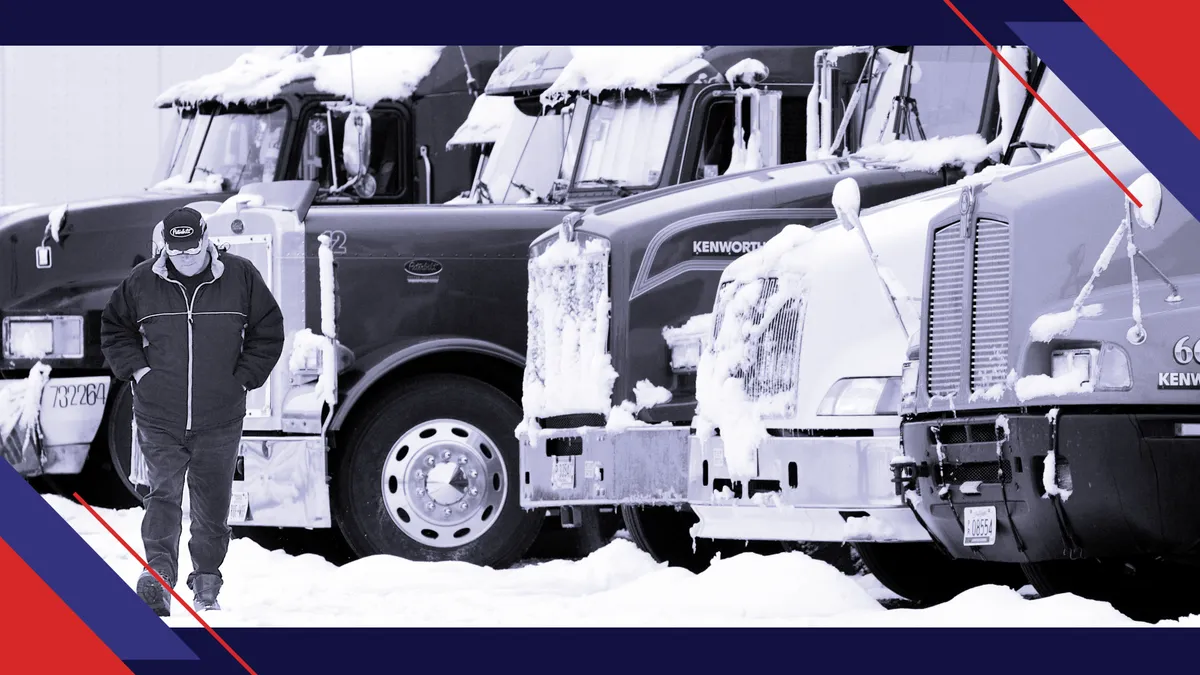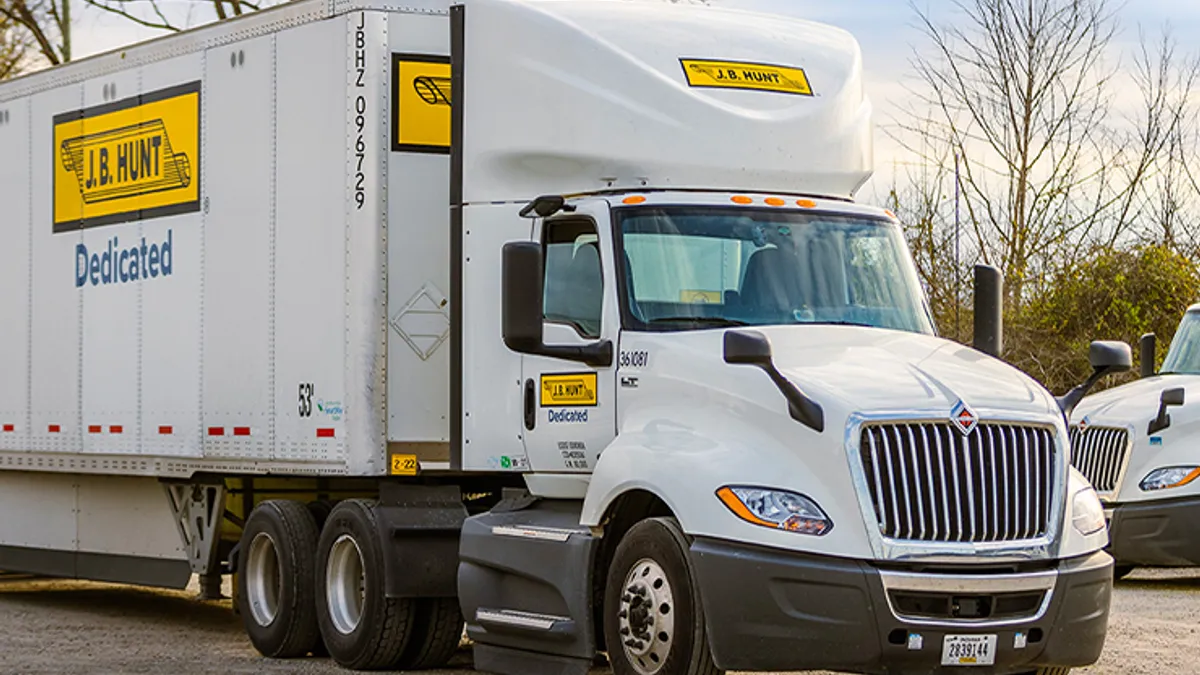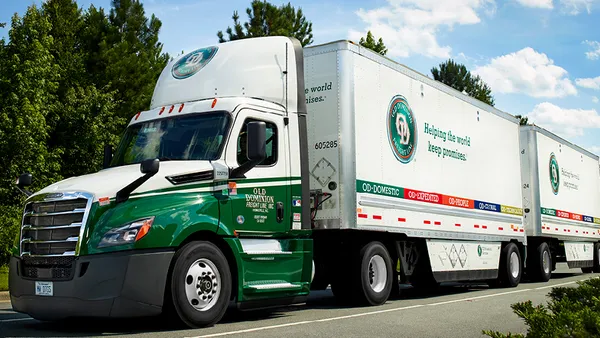This article is part of a series on the impacts climate change and severe weather have on supply chains. View the entire series here.
The Atlantic hurricane season kicks off June 1, and if federal predictions are right, it could be another challenging six months for drivers.
"Forecasters predict a 60% chance of an above-normal season, a 30% chance of a near-normal season, and a 10% chance of a below-normal season," according to the National Oceanic and Atmospheric Administration website. "However, experts do not anticipate the historic level of storm activity seen in 2020."
Truck drivers will need to be trained, retrained and prepared for the season, experts agreed. Training for severe weather is a must for fleets because, while it helps increase safety, it also affects profitability, said Max Farrell, CEO of WorkHound, a driver-feedback company.
"You have to stay safe in this business, to make a fair amount of money," said Farrell.
COVID-19 has prompted new kinds of training, he noted, but weather and climate have not been factored in as much when fleets assess training needs. Accidents also usually cause more training, Farrell said, though fleets don't always tie such new training to the weather and storm problems that may have contributed to the accidents.
But more and more fleets will focus on weather-related training, Farrell predicted, because it ties into safety scores and lower insurance premiums. "It would be too costly not to," he said.
Communication is key
Training for coming storms and the changing industry response to them, as well as possible infrastructure-related changes, is best done months before the season arrives, experts said. But that's hard to do for many fleets, when day-to-day concerns can can take priority.
"Trucking is always changing day-to-day, so it's difficult to stay focused on [weather] a month out," Farrell said. "So, with [fleets], we typically see they will send out updates."
That means a lot of the training has to be done when drivers are remote and off the road, parked. Many fleets have to prepare their drivers through remote training sessions. Some, such as Sharp Transport of Tennessee, call in specialists and use a third-party vendor to assist with weather-related training.
"You have to stay safe in this business, to make a fair amount of money."

Max Farrell
CEO of WorkHound
"We gear our training toward seasonal events," said Keith Wilson, Sharp Transport director of recruiting and safety.
When it comes to sharing information about weather conditions, Farrell said fleets will often use the in-cab communication system. But if the storm is regional and not national, managers will target their message to the trucks affected. Farrell said that is important for big national fleets, because drivers will "tune out" frequent storm messages.
Fleets should be proactive and serve as a real-time "co-pilot" for drivers when they are on the road and facing storms, Farrell said. The digital tools the trucks use will also be used for monitoring and messaging through the season, as drivers need to be made aware of changing weather situations.
Communication is crucial, as just one storm can cause nationwide havoc in the freight movement. February's polar vortex made clear. That storm sidelined thousands of trucks per day, many of them in Texas, one of the nation's main freight hubs of activity. Freight piled up in warehouses and ports, elevating TL spot prices for months.
Just one major storm's ability to derail trucking operations mean fleets must make weather scenarios a part of driver training, if they want to keep workers safe and operations smooth.
But weather training can be a challenge for fleets and driving schools if the sun is always shining, the weather is warm, the winds are calm and the environment generally stable, according to Larry Marsh, president and owner of JTL Truck Driver Training in Omaha, Nebraska.
Drivers could get accustomed to normal conditions and not be ready for slick roads caused by rains. Training in the summer is usually when the weather nationwide is relatively calm, and that means fewer challenges to teach to the drivers, he said.
"You don't get those experiences," said Marsh. "[Training in spring] allows you to encounter those weather patterns ... But you can't always wait until the most ideal time to train."
Marsh said simulators help mimic the varied weather conditions of the road, so he decided to order one. "It will help with the weather training," said Marsh.
Training at XPO Logistics
XPO Logistics said it has an extensive in-house training program. In 2020, the firm saw a 28% decrease in distracted driving and 19% decrease in lost workdays, an XPO spokesperson told Transport Dive.
"When extreme weather occurs, we have comprehensive guidelines to help protect our employees, equipment and facilities," an XPO spokesperson said in an email. "Drivers are trained on how to protect themselves from driving in snow, extreme cold and heat, and severe storms. While ongoing safety training is important, regular communication is critical to preventing and reducing exposure to severe weather-related events that mostly occur in the spring and summer."
XPO operations managers keep drivers and dockworkers apprised on local weather and traffic alerts in daily pre-shift meetings. The meetings include safety tips and reminders on how to prepare and keep safe during inclement weather, XPO said.
"[Training in spring] allows you to encounter those weather patterns ... But you can't always wait until the most ideal time to train."

Larry Marsh
President and Owner of JTL Truck Driver Training
XPO training for severe weather includes:
- Drive slowly and reduce speed in bad weather, traffic and other road conditions. Keep safe distances from other vehicles and allow extra distances from other vehicles.
- Wind gusts, wind microbursts and tornadoes carry high risk of a rollover. In these conditions, consider stopping in a safe location and waiting it out to remain safe.
- Aim high in steering during windy conditions. Objects blowing across drivers' paths are "cues of strong wind conditions." Scan the roadway to spot hazards early.
- Prepare for severe wind near tree lines and overpasses. Grip the wheel firmly and aim straight ahead. Be careful not to oversteer in response to strong winds.
- Don't use cruise control in bad weather. Heavy rain can cause your wheels to spin and lose control.
- If XPO drivers feel that they cannot safely operate due to weather conditions, they are to contact their local management immediately and report conditions to local dispatchers.
- Linehaul drivers should also bring extra food, clothing, water and medicines in case they are stranded due to closed highways.
When it comes to customers, XPO officials said the company has a lot of expertise in adjusting to unpredictable environments.
"During the hurricane season, we're able to roll out tools in XPO Connect that notify if a shipment is approaching bad weather or a traffic incident," the XPO spokesperson said. "We help customers get back online after several severe weather events by leveraging our transloading and diversion programs. XPO Connect helps customers navigate weather and other delays by providing enhanced visibility into weather, traffic, capacity, spot rates, and also helps them made informed decisions on carriers."
In the case of disasters, XPO works with customers, including municipalities, to help prepare and respond to disasters and weather-related events, according to the spokesperson.
"We move truckloads of essential goods, including pallets of water, food, plywood and generators, and have worked closely with customers in affected areas to get necessities to stores where consumers need them the most," the XPO spokesperson said.






















